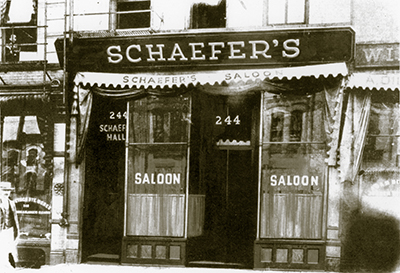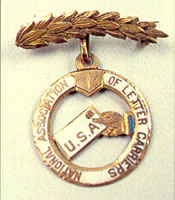About NALC
The Beginning

Free city delivery of mail was established in 1863. In the years that followed, letter carriers found themselves working 10- to 12-hour days, seven days a week. The fight to achieve legal recognition of an 8-hour day, successfully concluded in 1888, clearly demonstrated what could be achieved when letter carriers banded together and reached out beyond their local area.
This idea was behind the official call, issued by Milwaukee letter carriers, to meet in August 1889. The date was chosen to coincide with the reunion of the Grand Army of the Republic, an organization of Union veterans from the Civil War, an event that was scheduled to be held in Milwaukee. The hope was that the lower rail fares available because of the reunion would increase attendance and make the meeting truly national.
For the event, 60 letter carriers showed up in Milwaukee on August 29 in the meeting room above Schaeffer’s Saloon. The following day, these delegates passed a resolution officially establishing the National Association of Letter Carriers.
A look at the delegate list shows the NALC had a national range from the start, with representatives from San Francisco to Buffalo. But the schedule, in conjunction with a meeting of union veterans, meant the states of the former Confederacy weren’t well represented. And the large cities of Philadelphia and New York, which had been so central to the fight for the 8-hour day, were conspicuous by their absence.
The next year saw letter carriers in attendance from the north and the south, from small towns and big cities alike, united and ready to move forward. New York City letter carriers convened a meeting on July 4, 1890, to which they invited representatives of the fledgling NALC. In Wendell’s Assembly Rooms on 7th Avenue, supporters of the NALC made their case. Central to their argument was the contention that “an instrument to do national legislative work is a necessity”—a statement that still resonates today. A resolution urging all cities to bring their local associations under the NALC passed after serious debate.
 The first convention, which took place a month later in Boston, was attended by 68 delegates. By that point, the NALC encompassed 52 branches representing 4,600 carriers. Each subsequent issue of The Postal Record documented steady growth in the number of branches, as the NALC reached into every region, every state—anywhere letter carriers were delivering mail.
The first convention, which took place a month later in Boston, was attended by 68 delegates. By that point, the NALC encompassed 52 branches representing 4,600 carriers. Each subsequent issue of The Postal Record documented steady growth in the number of branches, as the NALC reached into every region, every state—anywhere letter carriers were delivering mail.
Those involved in these early years were conscious that the union needed some sort of badge or emblem so that members would have an easy way to identify each other. A committee was established at the convention in Boston to select an appropriate image. The resulting design was formally adopted in January of 1891: a hand holding a letter addressed “USA” within a circular border inscribed “National Association of Letter Carriers.” The design has served the union well, as it steadily grew in the years that followed; it remains the NALC logo today.
